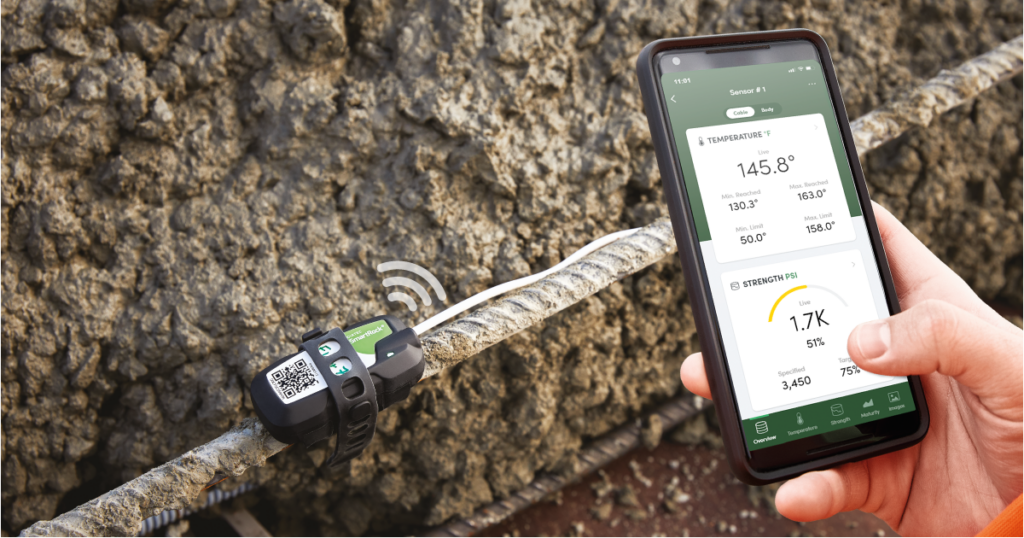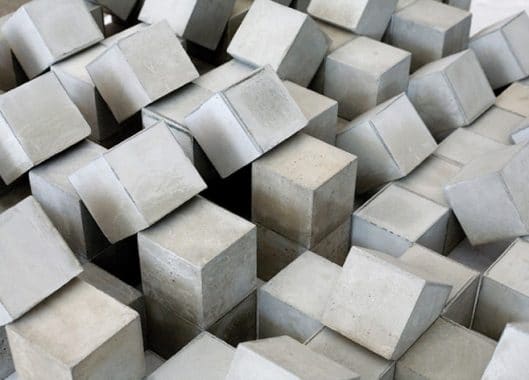Concrete is the world’s most widely used construction material, known for its strength, durability, and versatility. One of the most important properties of concrete is its compressive strength. This refers to concrete’s ability to withstand axial loads without failing. Testing compressive strength is critical for ensuring that the concrete mix used in a structure meets its design specifications. It will guarantee the safety and durability of the structure over time. Understanding the compressive strength of concrete enables project managers, engineers, and contractors to make informed decisions about load-bearing capacity, and formwork removal that ultimately are tied to project timelines. Two of the most common methods to assess this strength are the cylinder test and the cube test, which are standardized differently in various regions. This blog will explore cylinder vs. cube test, their pros and cons, and how to select the most appropriate test for your project.
Explore 12 Futuristic Technology Trends Solving Concrete's Biggest Challenges.
Why Test Compressive Strength?
Compressive strength is the single most important indicator of the quality of concrete. Testing ensures that the concrete mix can handle the designed loads without experiencing failure, cracking, or deformation. Additionally, compressive strength testing helps:
- Validate mix proportions: Although not a direct measurement of mix proportions, the compressive strength helps to validate if the correct proportions were used in the mix delivered.
- Monitor curing processes: Understanding when concrete has reached the required strength for various construction stages (e.g., formwork removal, post-tensioning).
- Ensure safety: Compliance with structural and safety codes requires a specified strength for the concrete being used.
Without accurate testing, construction projects are at risk of structural failures, increased costs, and project delays.
Learn all you need about compressive strength. Read more here.
Cylinder vs. Cube Test: Key Differences
Two of the most widely adopted methods for compressive strength testing are the cylinder test (common in the Americas) and the cube test (preferred in the UK, Europe, and other parts of the world). Although both tests measure compressive strength, the procedures, equipment, and shape of specimens differ.
Cylinder Test
- Test Standard: ASTM C39
- Specimen Shape: Cylinder 100 mm in diameter by 200 mm in height, or 4 in x 8 in (However, 150 mm diameter by 300 mm height, or 6 in x 12 is also accepted in the United States and Canada the cylinder is cast in 3 layers, 25 rods per layer | In the US 2 layers, 25 rods per layer
- Process: Concrete is poured and consolidated into cylindrical molds and allowed to cure for a specified period (usually 28 days). The cylinders are then placed in a compression machine, and a load is applied until the cylinder breaks. The breaking force is divided by the cross-sectional area to calculate compressive strength in psi or MPa.
Cube Test
- Test Standard: BS EN 12390-3
- Specimen Shape: Cube (150 mm x 150 mm x 150 mm, or 6 in x 6 in x 6 in), 3 layers, 25 rods per layer.
- Process: Concrete is poured and consolidated into cube molds, cured, and tested in a similar fashion to the cylinder test. The crushing force is applied to the cube in a compression testing machine, and the strength is calculated based on the cross-sectional area.

Pros and Cons of Cylinder vs. Cube Test
Cylinder Test
Pros:
- More representative for tall structures: Cylinder specimens more closely resemble vertical structural elements like columns, providing a better estimate of how concrete will perform in these scenarios.
- Industry Standard in North America: Adhering to ASTM standards, this test is widely accepted and used throughout the U.S. and Canada and most of Central and South America
Cons:
- Variable results: Differences in specimen height can introduce variability in results if curing or testing is not done correctly.
Cube Test
Pros:
- Easier to have a finished surface in contact with the compression machine: Since the cubes provide 5 evenly finished surfaces (bottom and 4 sides), it is easier to select a flat and uniform face that has a better finish.
- Faster setup in compression machines: Cylinders often require capping with sulfur/plaster or grinding to ensure parallel surfaces. This adds time, labor, and potential variability if the process isn’t done correctly.
- High accuracy for shorter elements: The cube test is often preferred for structures like pavements and foundations, where the behavior of concrete is best represented by a short, squat specimen.
Cons:
- Less applicable to tall structures: The uniform shape of cubes may not accurately reflect how concrete behaves in columns and other vertical structures.
- Regional preference: Cube tests are not as commonly accepted in regions like North America, making them less suitable for projects that require compliance with ASTM standards.
Learn more about cube testing in the UK. Click here.
How to Choose the Right Test for Your Project
Project managers and engineers should consider several factors when deciding which test to use:
1. Regional Standards
The most straightforward way to determine which test to use is to follow the standards and regulations of the region where your project is based. In North America, the cylinder test is the default method due to ASTM standards, while the UK and Europe predominantly use the cube test according to BS and Eurocode standards.
3. Lab Resources
Consider the equipment and expertise available in the testing laboratory. Labs in North America are often set up for cylinder testing, while labs in the UK are more familiar with cube testing. Choose the method that aligns with your available resources to ensure accurate results and compliance with regional standards.
4. Integration With Smart Technology
Regardless of which method you choose, integrating smart technology can offer real-time monitoring and valuable insights into concrete performance. Giatec’s SmartRock® sensors can be embedded into the concrete to provide continuous, real-time data on temperature and strength development. These sensors complement both the cylinder and cube tests by providing additional in-situ measurements, helping project managers make informed decisions about curing times and concrete performance.

Acceptability Norms: North America vs. UK
North America
In North America, compressive strength is measured using the cylinder test as per ASTM standards. Acceptable compressive strengths vary based on the type of structure, but for most general concrete work, compressive strengths between 3,000 psi to 6,000 psi (20 MPa to 40 MPa) are commonly used. High-performance concrete can reach strengths of over 10,000 psi (over 70 MPa). Yet, no matter the strength class, cylinders can be used to measure it.
Relevant Standards:
- ASTM C39: Standard for compressive strength testing using cylinders.
- ASTM C31: Standard for making and curing concrete test specimens.
- CSA A23.2-9C: Canadian standard for cylinder testing.
UK (and Europe)
In the UK, cube testing is the standard method to measure any strength class, with compressive strength typically reported in megapascals (MPa). For most general construction, cube strengths between 25 MPa and 50 MPa are common. Higher strengths are used for specialized applications, such as high-rise buildings or heavy infrastructure projects.
Relevant Standards:
- BS EN 12390-3: Standard for compressive strength testing using cubes.
- BS 1881: Part 116: Older standard still in use for some cube tests.
FAQs
1. Which test method is more accurate?
Both the cylinder and cube tests are accurate within their respective regions and contexts. The choice of test depends on regional standards, the type of structure being built, and the specific requirements of the project.
2. Can I use both tests on the same project?
Yes, some projects may benefit from using both cylinder and cube tests for different structural elements. It’s also common to integrate SmartRock sensors to monitor in-situ concrete conditions, providing real-time insights that complement these tests.
3. How do SmartRock sensors work with these tests?
SmartRock sensors are embedded directly into the concrete at the construction site. They measure concrete temperature and strength development in real time, providing data that can verify lab test results and give insights into in-situ performance. This helps project managers make timely decisions, such as when to remove formwork or when the concrete is ready for load-bearing activities.
4. What should I consider when choosing a test?
Consider the structural elements in your project, the regional standards (ASTM vs. BS), and the availability of lab resources. If you want more continuous, in-situ data, integrating SmartRock sensors will provide additional insights beyond what the standard tests can offer.
Conclusion
Understanding the differences between the cylinder and cube tests is critical for selecting the right method for your project. Each method has its advantages and drawbacks, and project managers should make their decisions based on regional standards, the type of construction, and the resources available. By combining traditional testing methods with modern technology like SmartRock sensors, you can ensure more accurate results, optimize timelines, and improve overall project efficiency.









